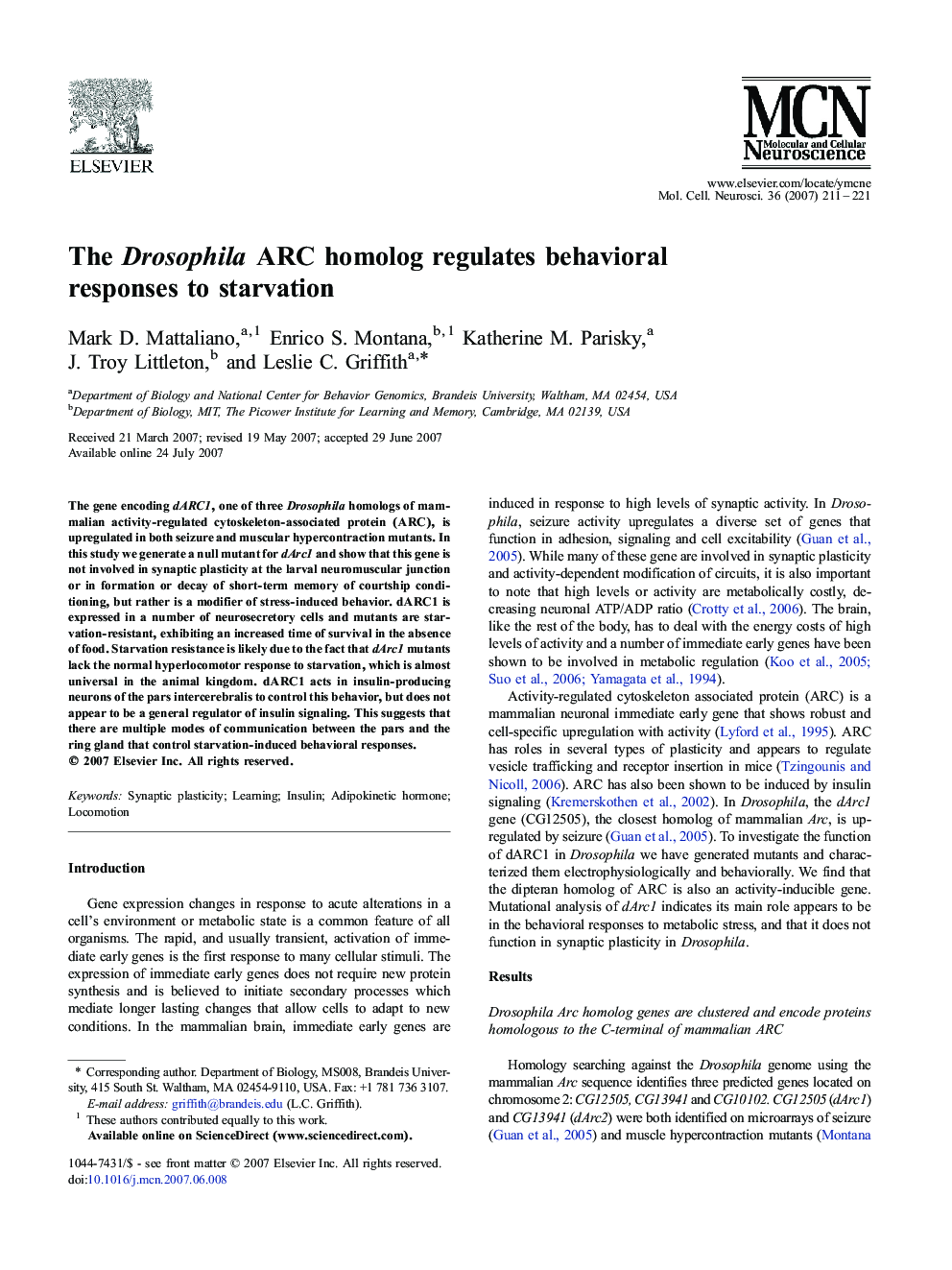| Article ID | Journal | Published Year | Pages | File Type |
|---|---|---|---|---|
| 2199207 | Molecular and Cellular Neuroscience | 2007 | 11 Pages |
The gene encoding dARC1, one of three Drosophila homologs of mammalian activity-regulated cytoskeleton-associated protein (ARC), is upregulated in both seizure and muscular hypercontraction mutants. In this study we generate a null mutant for dArc1 and show that this gene is not involved in synaptic plasticity at the larval neuromuscular junction or in formation or decay of short-term memory of courtship conditioning, but rather is a modifier of stress-induced behavior. dARC1 is expressed in a number of neurosecretory cells and mutants are starvation-resistant, exhibiting an increased time of survival in the absence of food. Starvation resistance is likely due to the fact that dArc1 mutants lack the normal hyperlocomotor response to starvation, which is almost universal in the animal kingdom. dARC1 acts in insulin-producing neurons of the pars intercerebralis to control this behavior, but does not appear to be a general regulator of insulin signaling. This suggests that there are multiple modes of communication between the pars and the ring gland that control starvation-induced behavioral responses.
